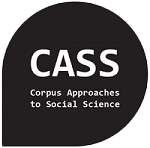The Trinity Lancaster Corpus of Spoken Learner English is providing multiple sets of data that can not only be used for validating the quality of our tests but also – and most importantly – to feedback important features of language that can be utilised in the classroom. It is essential that some of our research is focused on how Trinity informs and supports teachers in improving communicative competences in their learners and this is forming part of an ongoing project the research team are setting up in order to give teachers access to this information.
Trinity has always been focused on communicative approaches to language teaching and the heart of the tests is about communicative competences. The research team are especially excited to see that the data is revealing the many ways in which test takers use these communicative competences to manage their interaction in the spoken tests. It is very pleasing to see that not only does the corpus evidence support claims that the Trinity tests of spoken language are highly interactive but also it establishes some very clear features of effective communicative that can be utilised by teachers in the classroom.
The strategies which test takers use to communicate successfully include:
- Asking more questions
Here the test taker relies less on declarative sentences to move a conversation forward but asks clear questions (direct and indirect) that are more immediately accessible to the listener.
- Demonstrating active listenership through backchannelling
This involves offering more support to the conversational partner by using signals such as okay, yes, uhu, oh, etc to demonstrate engaged listenership.
- Taking responsibility for the conversation through their contributions
Successful test takers help move the conversation along by by creating opportunities with e.g. questions, comments or suggestions that their partner can easily react to.
- Using fewer hesitation markers
Here the speaker makes sure they keep talking and uses fewer markers such as er, erm which can interrupt fluency.
- Clarifying what is said to them before they respond
This involves the test taker checking through questions that they have understood exactly what has been said to them.
Trinity is hopeful that these types of communicative strategies can be investigated across the tests and across the various levels in order to extract information which can be fed back into the classroom. Teachers – and their learners – are interested to see what actually happens when the learner has the opportunity to put their language into practice in a live performance situation. It makes what goes on in the classroom much more real and gives pointers to how a speaker can cope in these situations.
More details about these points can be found on the Trinity corpus website and classroom teaching materials will be uploaded shortly to support teachers in developing these important strategies in their learners.
Also see CASS briefings for more information on successful communication strategies in L2.
